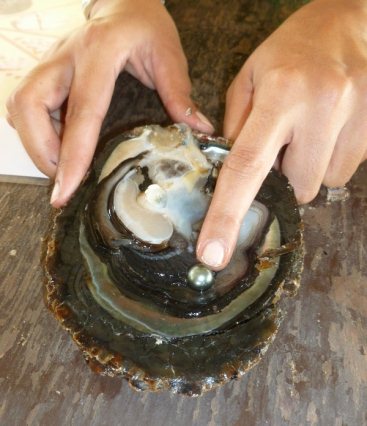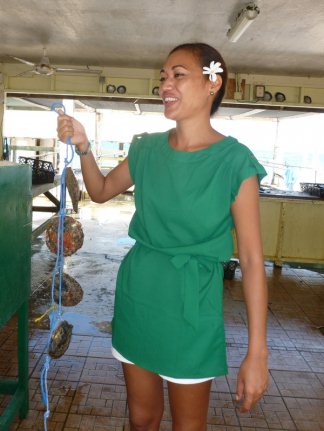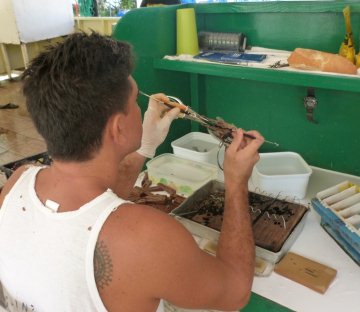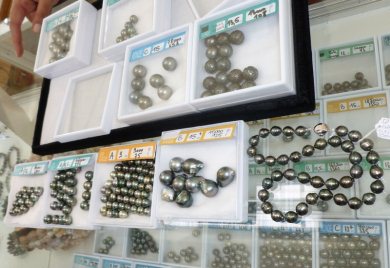Visit to a Pearl Farm in Rangiroa

Lynn & Mike ..around the world
Mike Drinkrow & Lynn v/d Hoven
Thu 9 May 2013 05:59
|
14:58.19S
147:38.29W Visit to a pearl farm
in Rangiroa Yesterday morning we came through the
Tiputa Pass into the Rangiroa atoll. This is the biggest atoll in French
Polynesia with a massive lagoon spanning 1640 sq/kms. Today we
went on a tour of the Gauguin Pearl farm which has been going for 25
years.
Although the price of pearls has dropped
dramatically over the last decade, the Pacific "black"
pearls are still sought after
and seem pretty expensive. (A single top quality 12mm pearl cost 670
Euros) These pearls are grown in the black-lipped oyster but not actually
black, they are various shades of grey/ pewter - and some have tinges of green,
pink , blue etc.
The process goes something like
this:
Baby oysters are grown in the neighboring
atolls of Ahe or Manihi. When they are about 6cm in diameter they are brought to
Rangiroa by boats. Here a small hole is drilled through the shell and they
are strung on a line, and suspended vertically in the water in
rows. When the oyster is 2 years old it can be seeded. In a
very quick procedure, the shell is wedged open about 1cm, and the grafter
very surgically makes a cut in the appendix of the oyster,
where a 6mm shell ball (the seed) is placed. Along with the
seed, a tiny square of live mantle is also inserted - this has
been harvested from another oyster with good colour, which will be
replicated in the new pearl. Over the next 2/3 years the
seed will get covered in mother of pearl to create the cultured black
pearl.
Some other interesting
facts:
There almost are no "natural" pearls found
in black lipped oysters in the Pacific (incidence of 1 in 15 000)
The seed is made from a fresh water shell,
harvested from the Mississippi River, that is ground into perfect
spheres.
Every 2 months the string of hanging
oysters is pulled up on to a boat where it is cleaned of barnacles and
parasites.
Each oyster can be seeded up to 3 times,
as long as the pearls produced are good quality. In round 2 and 3, bigger
seeds are placed to make bigger pearls.
The growth of pearl material around the
seed is between only between 2 and 4 mm thick.
Pearls are not graded by colour, only by
perfection and size.
When an oyster produces a very bad shaped
pearl it is killed and the very small muscle is harvested for the local
restaurant business.
After the process the shell is sent to
China where it is used to make curios, buttons and other "mother-of-pearl
items.
  Pearl squeezed out of the
appendix for the
demo The
string of oysters hanging on a line
  Grafter at
work Different
grades of pearls
|